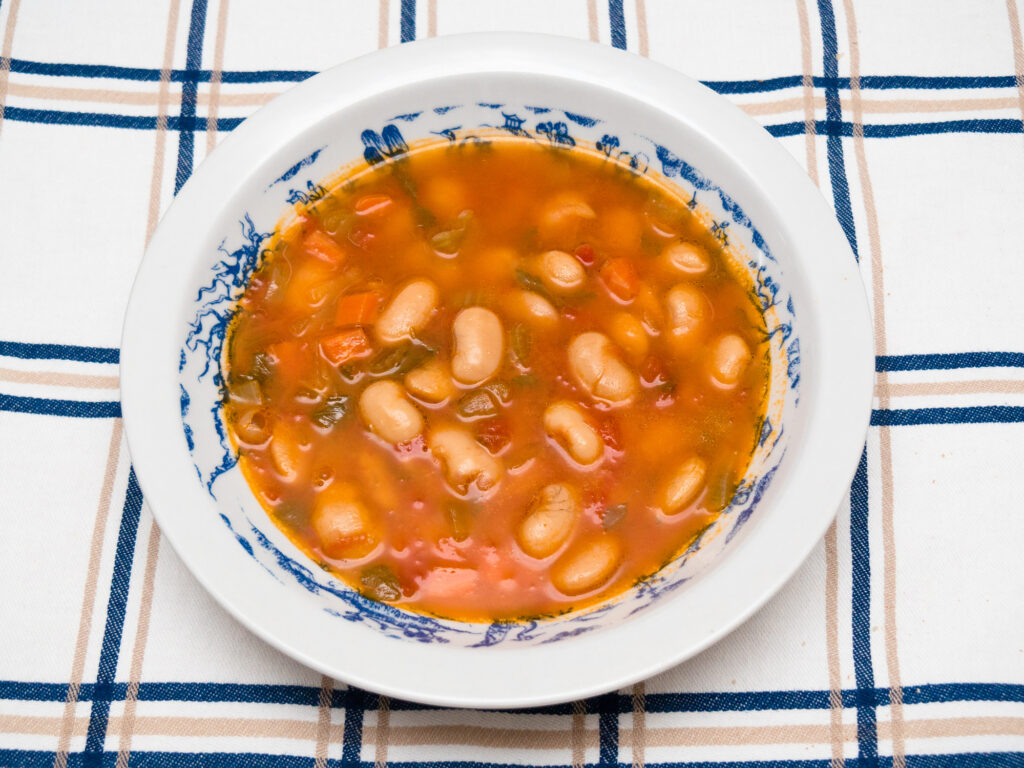When you think of Greek cuisine, sausage might not be the first thing that comes to mind.
But, given the prevalence of encased ground meat delights all over Europe and the Middle East (and Asia), it’s really not a surprise that Greece has its own version of this delicious snack.
Greek ‘loukaniko’ (literally, sausage) is spiced pork sausage, often made with orange zest, fennel, or leeks, has been a Greek staple for centuries. I know what you’re thinking. Orange zest? Leeks? I promise these are the most scrumptious sausages you ever tried.
Whether grilled, pan-fried, or tucked into a meze platter, loukaniko is a savoury celebration of local taste and traditions. And, more importantly, it is a bomb of flavour that pairs so well with tzatziki (I highly recommend it), kaseri, fresh cut cucumber or even peppers. My personal favourite is loukaniko in pita bread with tzatziki, coleslaw and halloumi (not for those with sensitive stomachs)!

What Are Its Origins?
Despite AI consistently telling me it has ‘origins in ancient Greece’, Wikipedia sources the name to an area in Southern Italy called Lucania, and an ancient Roman cuisine called ‘Lucanica‘. This root word appears in many languages to refer to a kind of sausage.
An article on Tastes of History, traces the sausage back to Ancient Mesopotamia – which is not surprising given that sausages were a very popular way to preserve meat (the mix of spices and smoking contributes to this). Tastes of History also makes note of the their popularity in both Ancient Greece and Rome.

AI proceeded to tell me this
The Latin word lucanica, named after the region of Lucania in Southern Italy, described a type of sausage brought to Rome by Lucanian slaves. The Greeks adopted the term, and the practice of spiced, preserved meats took root—especially in rural areas where home butchering and preservation were crucial during winter months.
Over time, regional styles of loukaniko developed across Greece, each with its own distinctive blend of spices, herbs, and preparation techniques.
While I have yet to confirm this theory of the Lucanian slaves, I can confirm there exist a delicious variety of styles with its own distinctive blend of spices, herbs, and preparation techniques.
The word ‘sausage’, by the way is Middle English/Latin derived, coming from ‘salsus‘ which essentially means salted, salt being a primary element in the food preservation process.
How Loukaniko Is Made
As mentioned, loukaniko recipes vary widely depending on the region and the cook, but the basics are:
Typical Ingredients:
- Coarsely ground pork (sometimes mixed with lamb or beef)
- Orange zest or peel (for a bright, citrusy aroma)
- Leeks or garlic (adds sweetness and depth)
- Fennel seeds, coriander, or oregano
- Red wine or vinegar
- Salt and pepper
- Natural sausage casing
The meat is seasoned, marinated, then stuffed into casings and either cooked fresh, smoked, or air-dried. It’s commonly grilled or pan-fried and served as part of a mezé spread, with crusty bread and a shot of ouzo or tsipouro. Many diaspora Greeks will also include them in their home BBQ spread.
I asked an older relative who grew up near a village in Kalamata about making loukanika when she was growing up. She confirmed that the sausages were made with various herbs mainly, along with oranges. There was no smoking involved but back in those days there was a space in the homes for these to be hung. They lasted a long time. They were mainly made by women and it was usually done in Winter, after Christmas is when the meat was fresh. When it was time to eat, they were cut in small pieces, lightly fried (sometimes with an egg) and served with cut tomato. She reiterated how good and tasty the tomatoes were in Greece (they are even now). Sometimes sausages would be cooked on coals, similar to how we now cook sausage on the BBQ.
She also told me about ‘pasto’, which is another food that was made from the same animal (back in those days people would have tried to preserve as much of the animal as possible – people did not have a wage in Greek villages and lived off the land). Pasto is a type of cured pork, preserved in salt. I believe it is similar to the beef pastirma (which is either Turkish or Armenian, but either way a byproduct of Ottoman times)
Do you want to try Loukaniko?
Sausage making is probably not something many of us are keen to try, but I did find a nice loukaniko recipe here.
If you are lucky enough to live in a Greek diaspora area or near a deli or grocery store that stocks Mediterranean goods, you may be lucky to find some of these. I myself was lucky enough to source them in my South Western Sydney suburb for a few years before the butcher retired.
Failing this, check out some local Greek restaurants in the area. If you can’t find that, go ahead an explore some Italian style sausages for a similar flavour (just until you book your flight to Greece, lol).
Kali Orexi!
Author’s note: This blog was written by a human using a combination of AI tools and human input. All content is 100% verified with sources from the Internet by a human. This blog also references an oral exchange of historical information between two family members.




